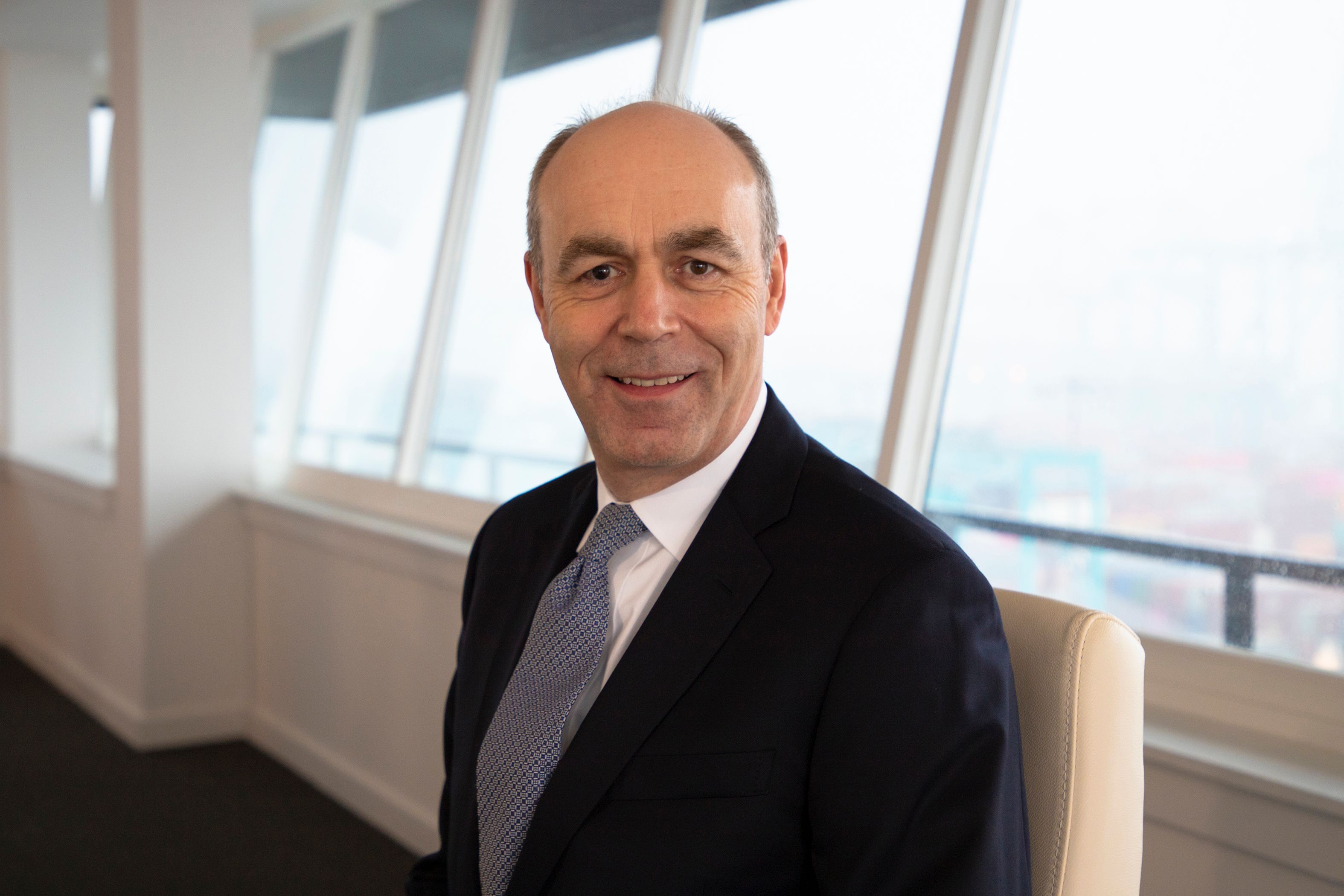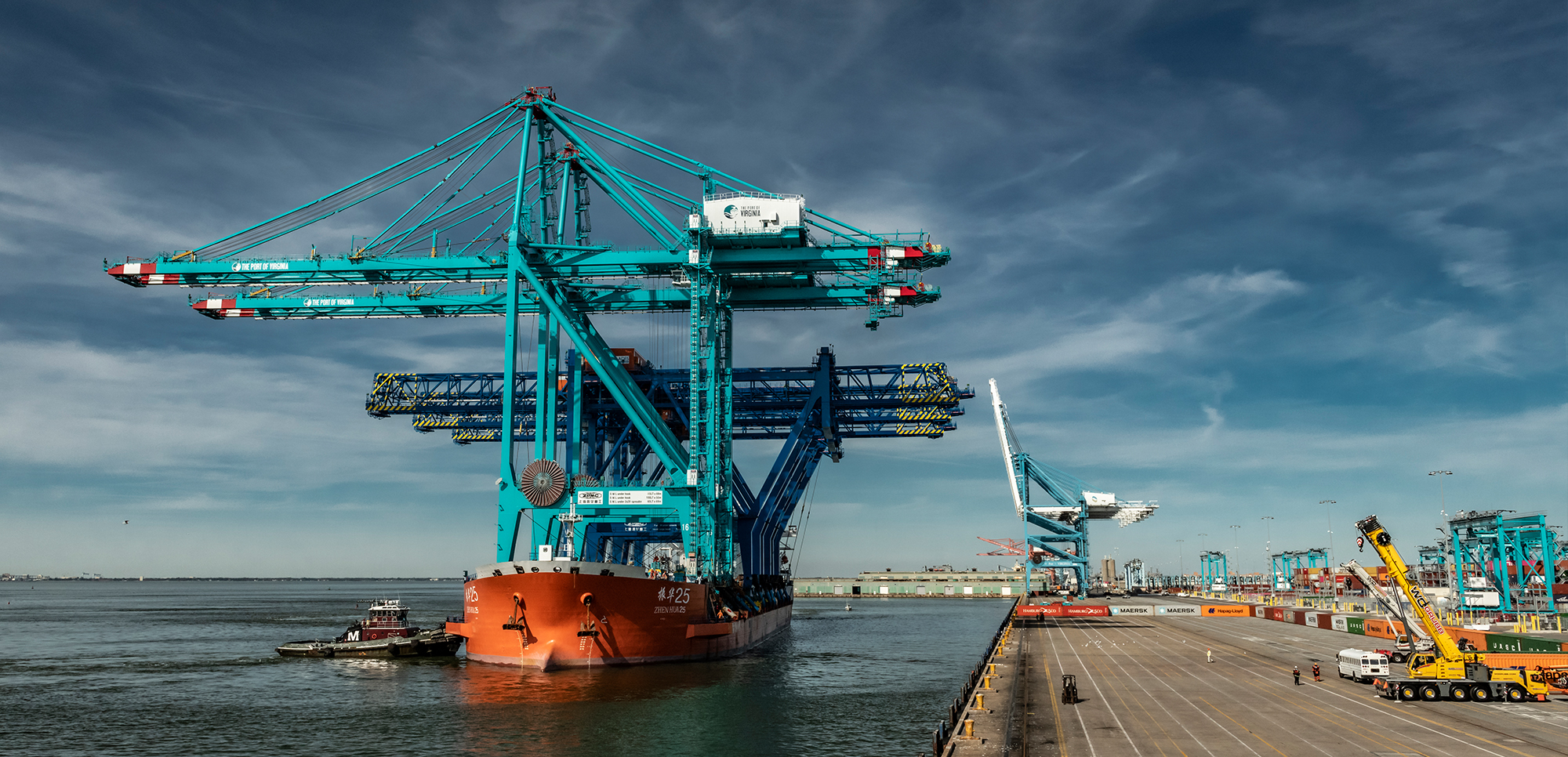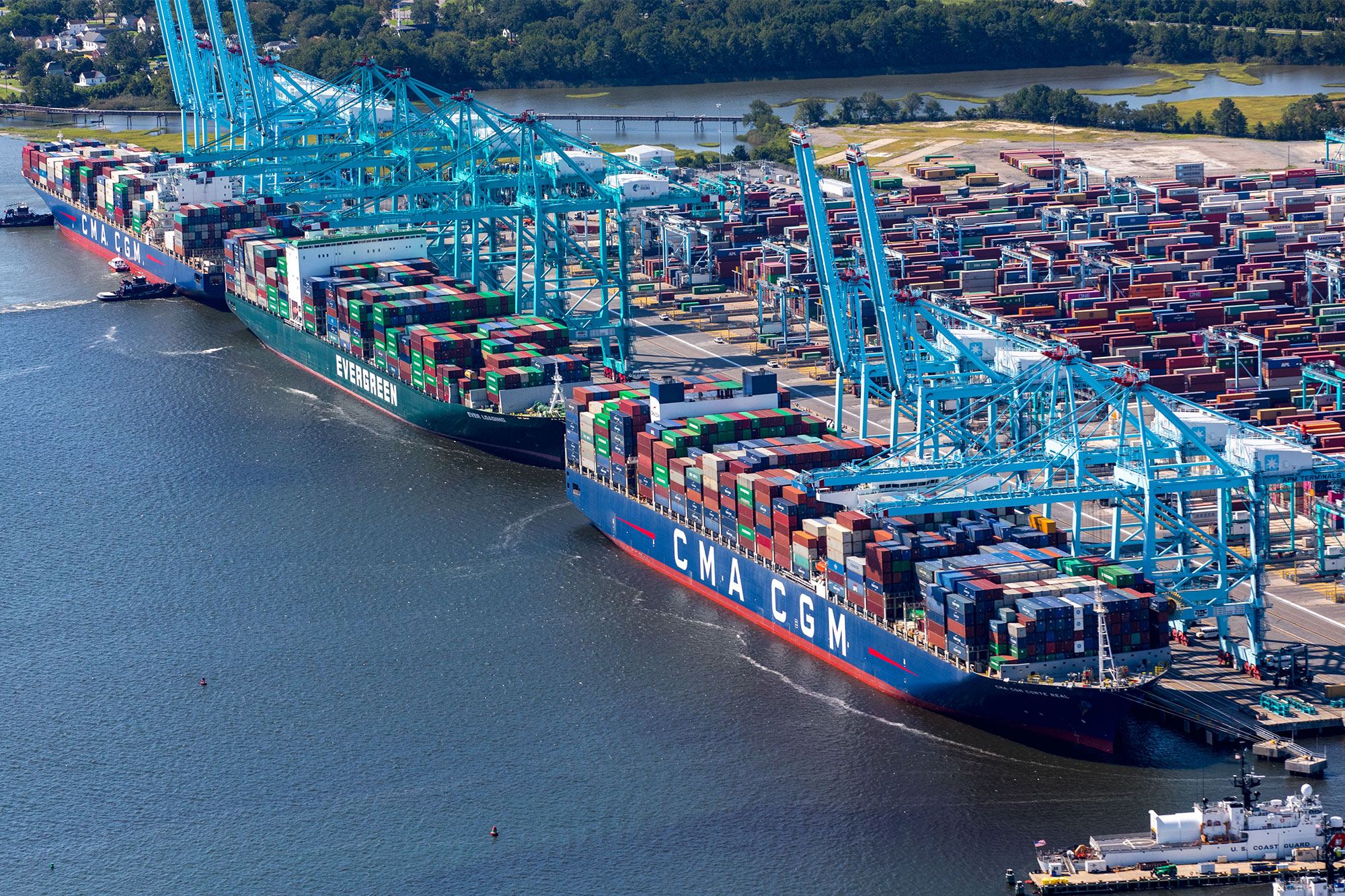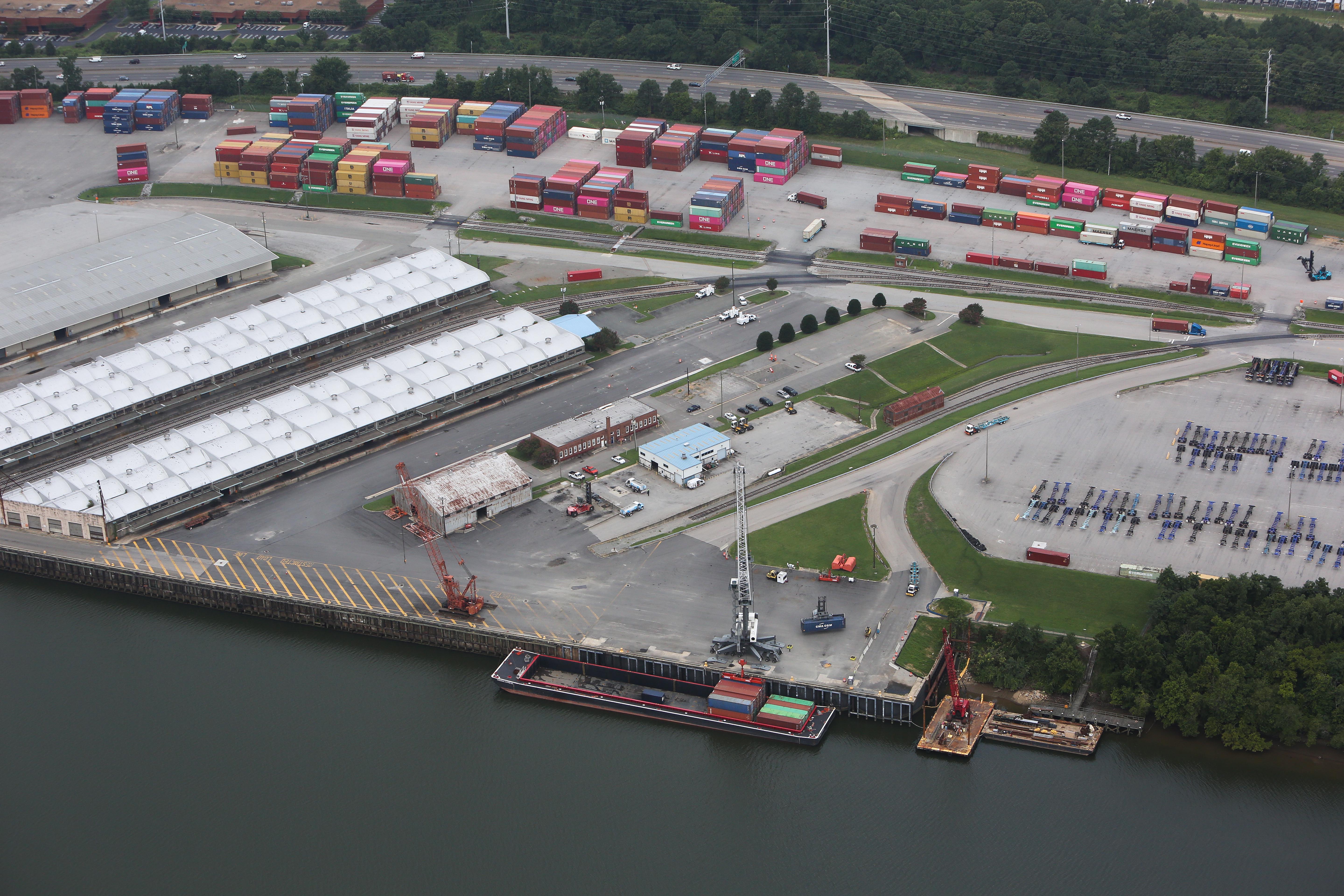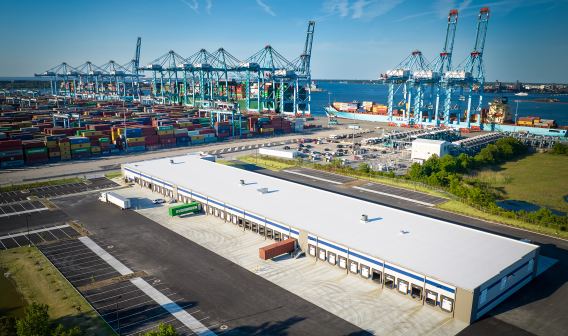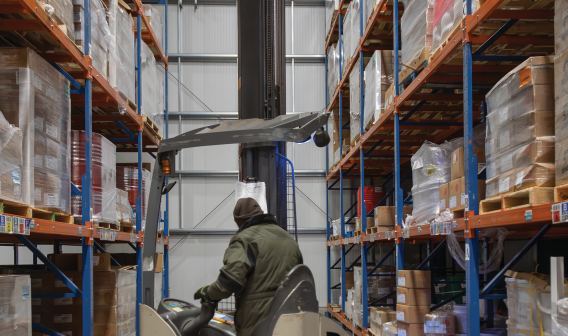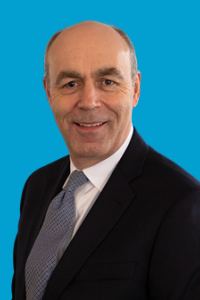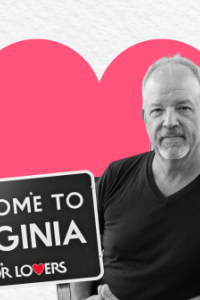Building on Success at The Port of Virginia
A Conversation With Stephen Edwards
Stephen Edwards joined The Port of Virginia as CEO and executive director in January 2021. Before joining the port, he was president and CEO of TraPac, which operates container terminals in California and Florida. VEDP President and CEO Stephen Moret spoke with Edwards about the port's ambitious ongoing modernization efforts, Virginia's geographic export advantages, and the challenges of guiding essential logistics operations during a global pandemic.
Stephen Moret: Why don’t we start by sharing a little bit about what drew you to The Port of Virginia?
Stephen Edwards: Our subsidiaries operate the port. We’ve got direct responsibility for port operations and delivery at the service level. We’ve got commercial oversight for the port and direct involvement in economic development to the port when appropriate. And the attraction of my role is the ability to really concentrate on port excellence, how to compete on an inter-port basis, and how to build a gateway port.
An additional attraction was to be able to take that total gateway approach and say, “How can I lead an organization and help it grow as a gateway port?” That’s what really drew me to the position.
Moret: As you look at The Port of Virginia today, what do you think sets it apart from its peers on the East Coast, and how have some of the recent infrastructure and modernization investments affected its value proposition?
Edwards: A large part of the U.S. population is east of the Mississippi River. The ports on the East Coast have this opportunity to grow market share because a significant amount of business comes through California ports and is railed across to the Ohio Valley, the Midwest, and partly to the East Coast.
If we can provide excellent service, we can attract cargo to come through the Eastern Seaboard to get to the market where the population lives. The investments made here have improved the value proposition and made us so much more capable than they were only four or five years ago.
Increasingly, ports have to be viewed as supply chain enablers. In today’s world, that’s where we can differentiate ourselves as a provider, by really providing that modern capability and service excellence that importers and exporters look for.
Moret: You bring quite an interesting set of experiences that you’ve had around the world, which are relevant to this space and this leadership role. How does your experience in the private sector in the industry inform your philosophy with leading the port as a public entity in Virginia?
Edwards: I’ve worked in publicly listed groups where you’re heavily driven by your share price. I’ve worked for some of the most sophisticated private equity groups and international investors where your share price may not be public, but you’re heavily driven by your shareholder value. I’ve worked for shipping lines and in the port and logistics sector. When it comes to dealing with shipping lines and their experiences as a customer, I hope to be able to translate some of that to the port as a provider for that same sector.
If we think through what you need to do well to be successful, I’d start with good governance. Good enterprises have good governance. If I think about port operations, it starts with safety. Good governance, safety in operations — they’re the same if you’re in the public sector or the private sector.
How are you identifying and mitigating the risks that are in front of an enterprise, and how do you sustainably grow? That’s a key one for us in Virginia. How do you sustainably grow port operations?
At the end of the day, if you’re in the private sector, you’re trying to build shareholder value. If you’re in the public sector, you’re trying to build shareholder value. In the case of The Port of Virginia, this wonderful enterprise, the shareholder is, of course, the Commonwealth of Virginia. The success of ports, whether you’re in the private or public sector, is to attract people to use the port.
The measure of shareholder value may be slightly different between the public and private sectors, because in the public sector, we may be more of an enabler than a pure financial play. But we have to meet our shareholders’ expectations, and the Commonwealth of Virginia is really going to look to the port to be a catalyst of economic growth and economic strength for the Commonwealth. And with that comes strong performance and strong returns.
Moret: What kinds of things come to mind as some of the biggest challenges facing ports in the United States? Not just The Port of Virginia, but ports in general over the next several years and beyond. Are there some shared challenges that leaders of ports are going to have to tackle?
Edwards: We’re in an industry that’s scaling up. The analogy I would use is when the airline industry decided to go to significantly greater sizes of aircraft. Airports had to extend runways or build greater passenger terminals. You have the same in our industry with the size of vessels. We’ve seen that recently in the news with the Suez Canal incident. What we’re seeing is significantly larger volumes of trade moving on individual vessels, and that creates infrastructure challenges of surge capacity — bottlenecks that can rear up quite quickly if proper planning isn’t in place.
The investments that the port has made in modernization programs in the last years are really going to help. You not only plan for big surges, but how do you use technology to manage those surges? And how do you interact with your railway partners, with your trucking industry partners, with your third-party logistics companies? These are challenges that exist in any point of a transportation chain, whether you’re dealing with goods or with passengers, and whether you’re dealing with warehousing or container terminals.
If I were talking to a site selector or a CEO who's looking at where to do business, what I would say is that The Port of Virginia is the most exciting port on the East Coast.
Moret: I want to expand on that a bit. We’ve seen a big shift toward really enormous ships. We’ve also seen one of the unintended consequences with one of those big vessels in the recent Suez Canal incident. What do ports need to be doing in terms of infrastructure to allow them to accommodate these ships? Is there anything the U.S. should be thinking about at a national level in that regard?
Edwards: One of the biggest advantages of The Port of Virginia is that on the maritime side, we have the natural harbor, the gateway of the maritime base of Hampton Roads. When it comes to building channels and wider berths and ports, we do that largely on a state-by-state basis. We’re competing with New York and New Jersey, Georgia, South Carolina, and Maryland.
We have to concentrate our investments in a number of ports that can really handle these vessels well, and Virginia is superbly placed for that on the maritime side. Then we need to build highly efficient distribution networks into the right sites. Those sites don’t have to be 500 miles away — they can just be 50 to 100 miles away — where we can distribute the cargo into the domestic freight network.
Moret: The last year or so, the COVID-19 pandemic has obviously created some significant challenges for the industry here in Virginia, and nationally and globally. What steps do you think ports can take to help ensure supply chain viability for future crises?
Edwards: The Port of Virginia can largely say, “Job well done.” The port has operated throughout. That’s a credit to everybody involved in the port and its operations, and all the stakeholders. The lesson is really in the early part of the pandemic, with the ability of the industry to be declared essential. I think that was very important. Because the message was, “We’re going to continue to operate.”
It really was roll-your-sleeves-up time — how can we continue to do this in a way that we can keep people safe? Having a strong safety program, and the proper protocols in place to begin with, allowed that to happen.
I think the one area that we’re still struggling with in international supply chains is the sea ferries, the people on the ships. There still are really no proper international protocols for those people. We need to take our hat off to them. They have been operating ships year-round, but the ability to do crew changes has been highly limited. How do you protect people who are in an international environment, operating far from home, at a time like this?
Moret: What has your focus been in the first few months at the port? What are some initial broad strokes at some of the big goals you envision trying to tackle during your tenure?
Edwards: I arrived in the middle of January to this role from Southern California. Getting to know people was a little different. You didn’t follow the novel playbook of leadership, which is to walk the floor and say hello and get out on site to meet people, because that wasn’t possible. I tried my best to meet most of my colleagues in person but, for a large number of them, it’s been virtual.
When I look now going forward, we’ve got this opportunity in Virginia to really build off the foundational base of what we have in the port’s modernization. How do we build these strong partnerships with other players in the supply chain? And how do we build those alignments to make sure we’re all looking to grow the port? How do we organize the strategic growth, and how do we build those strong partnerships with the railroads, with the largest importers, the agricultural exporters?
I think there’s a been a lot of good work done here on decarbonization. There’s more to do, and that will be a focus of some of our future investments. How do we continue to improve our carbon footprint?
Moret: When we spoke with your predecessor, John Reinhart, a couple of years ago, one of the things he talked about was the port’s long-term plan, looking decades ahead for future growth. Do you have any thoughts about near-term actions to help position the port for where it’s going to be two or three decades from now?
Edwards: The port has a very sound, solid infrastructure plan to service the business. We now have two very modernized container port facilities in Virginia International Gateway, operating in Portsmouth, and Norfolk International Terminals. Both of those are operating extremely well and at high levels.
It’s a great credit to the team here, having built — in the last five years — the second phase of the facility in Portsmouth, as well as completely rebuilding the Norfolk facility. Both went exceptionally well, and it really was a case of take what was originally built, enhance, and replicate.
There are currently three projects going on in the next part of that plan. The first one, which is very important to the port as a whole, is dredging the channels coming in to make them deeper and wider. That’s to position the port to be capable of handling these large ships. It’s exceptionally important that we get that to completion with the right federal funding. That’s critical to make sure the channels are right for these large ships.
We hope to commence, in the middle of this year, expansion and modernization of the Central Rail Yard at Norfolk International Terminals. We’ve already fulfilled that at VIG, but we’re building a more modern rail facility on the Norfolk side of the harbor.
Perhaps, more importantly, we’ve got to start looking at the inland piece. How do we take the port to Interstate 95 and connect to the wider domestic supply chains in Richmond using the barge networks, or farther inland, using the Norfolk Southern and the CSX rail networks, so that we can attract supply chain or exporting industries to the Commonwealth?
Moret: You’re really going to have your hands full in the next few years. Is there anything else you want to share for context?
Edwards: If I were talking to a site selector or a CEO who’s looking at where to do business, what I would say is that The Port of Virginia is the most exciting port on the East Coast. What drew me here was the ability to say, “Look, you’ve got the capability to oversee the entire gateway.” But it’s also doing so with the most modern facility on the East Coast.
I would hope that site selector or that CEO would look at Virginia and say there’s a high degree of confidence in these port operations — and not only in that they will work, or that they do work, but a high degree of confidence that we’ve built resiliency and decarbonization into this process. We know how to stay ahead of the demand curve so they can take their business, bring it to Virginia, and say, “We’ve got the confidence to do business in the Commonwealth as a whole because we know we can bank on the port.”
Moret: You’ve made a very strong, positive impression so far with the business community and public leadership of the Commonwealth, and we’re very excited about The Port of Virginia’s impact on Virginia’s economic development in the years ahead. Thank you for joining us today. We look forward to continuing to cover your leadership during your tenure, as well as continued developments at the port.
For the full interview, visit www.vedp.org/Podcasts
